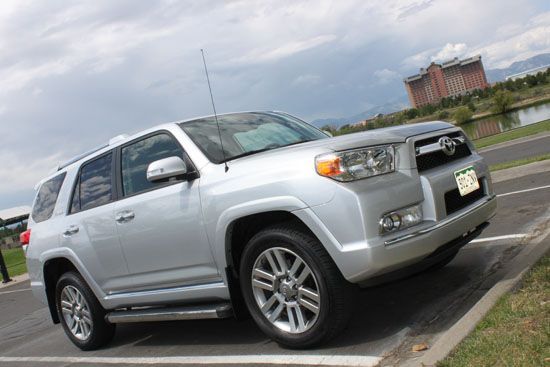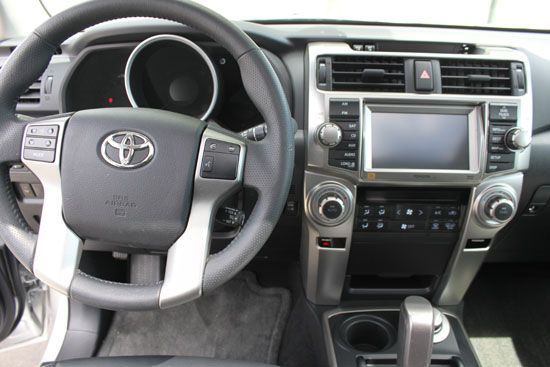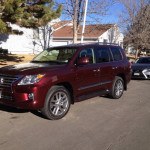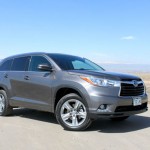The first Toyota 4Runner hit the market in 1984, and from that moment on, it became a legend among off-road enthusiasts. While the 2013 model may not have revolutionized the design, it brought fresh styling and enhanced comfort to an already iconic vehicle. Mountains AND city? Yep, it can handle both. Toyota sells approximately 45,000 units of the 4Runner annually, which, while not top-tier in sales, makes it one of the brand's most recognizable models. The 4Runner has always been a favorite for off-road adventurers thanks to its body-on-frame construction, narrow profile, excellent ground clearance, and available locking differentials. It’s also known for its durability—many older models are still out there, often modified into trail-ready machines. Today, the 4Runner is offered in three trim levels: SR5, Trail, and Limited. The SR5 is the base model and by far the most popular, making up nearly 60% of sales. The Trail edition is tailored for serious off-roaders, featuring a unique hood scoop, bumpers, and advanced features like CRAWL control, A-TRAC traction, and locking differentials. This version accounts for around 20% of sales and is the go-to choice for those who live off-road. Finally, the Limited trim is the premium option, offering luxury touches such as chrome accents, heated mirrors, a moonroof, and larger 20-inch wheels. My review unit also included optional running boards and a high-end JBL audio system with navigation. The Limited 4Runner 4×2 starts at $41,365 and offers fuel economy of 17/22/19 mpg (city/highway/combined). Opinions on the 4Runner’s design are divided. Initially, I found the curvy headlights and boxy shape unappealing, but after driving it for a week, I grew to appreciate its bold and distinctive look. It definitely stands out on the road. The chrome accents are a personal preference, but they’re well-balanced and don’t come across as over-the-top. The roof rails are a practical feature, perfect for carrying skis, bikes, or other gear. The interior feels cramped because it is. However, it does have nice interior features and leather seating. The interior of the Limited model is a step above the others, with soft leather seats and a premium feel. It’s a vehicle that can transition smoothly from a night out to a weekend adventure in the mud. However, the cabin is quite tight, especially for taller drivers. The seating position is low, and the controls are packed closely together, which might take some getting used to. That said, the sliding rear window remains a standout feature, now even enhanced with a “party mode†that sends music to the tailgate—perfect for outdoor gatherings. The 4Runner isn’t the most refined SUV on the market, but that’s part of its charm. As one of the last body-on-frame SUVs, it’s built to endure tough conditions. Compared to modern unibody vehicles, it drives more like a truck—solid, rugged, and ready for the trails. While it’s not ideal for long road trips, it’s perfect for daily use and weekend adventures. The 4Runner is a niche vehicle, designed for those who value capability over comfort. If you're an off-road enthusiast, this is the one for you. If not, you might find it lacking in refinement. But honestly, I didn’t realize how much I enjoyed off-roading until I drove this one. Coffee Tamper And Silicone Stand JIANGMEN WOHAO IMPORT AND EXPORT CO.,LTD , https://www.funghogroup.com
Exterior

Interior
Driving Impressions
Related Posts
2013 4Runner Limited Review – Mountains and City Ready
 2014 Lexus LX 570 Review – Powerful SUV Ready For Off-Road Action
2014 Lexus LX 570 Review – Powerful SUV Ready For Off-Road Action  Evolution Of The RAV4: How America’s First Crossover Came To Be
Evolution Of The RAV4: How America’s First Crossover Came To Be  2013 Toyota RAV4 Picks Up IIHS Top Safety Pick, KBB Top SUV Ranking
2013 Toyota RAV4 Picks Up IIHS Top Safety Pick, KBB Top SUV Ranking  2014 Toyota Highlander Limited Review – Great Upgrades
2014 Toyota Highlander Limited Review – Great Upgrades  10 Toyota 4Runners That Make Us Want To Buy A Lift Kit
10 Toyota 4Runners That Make Us Want To Buy A Lift Kit  10 Stunning Classic Toyota Land Cruisers
10 Stunning Classic Toyota Land Cruisers